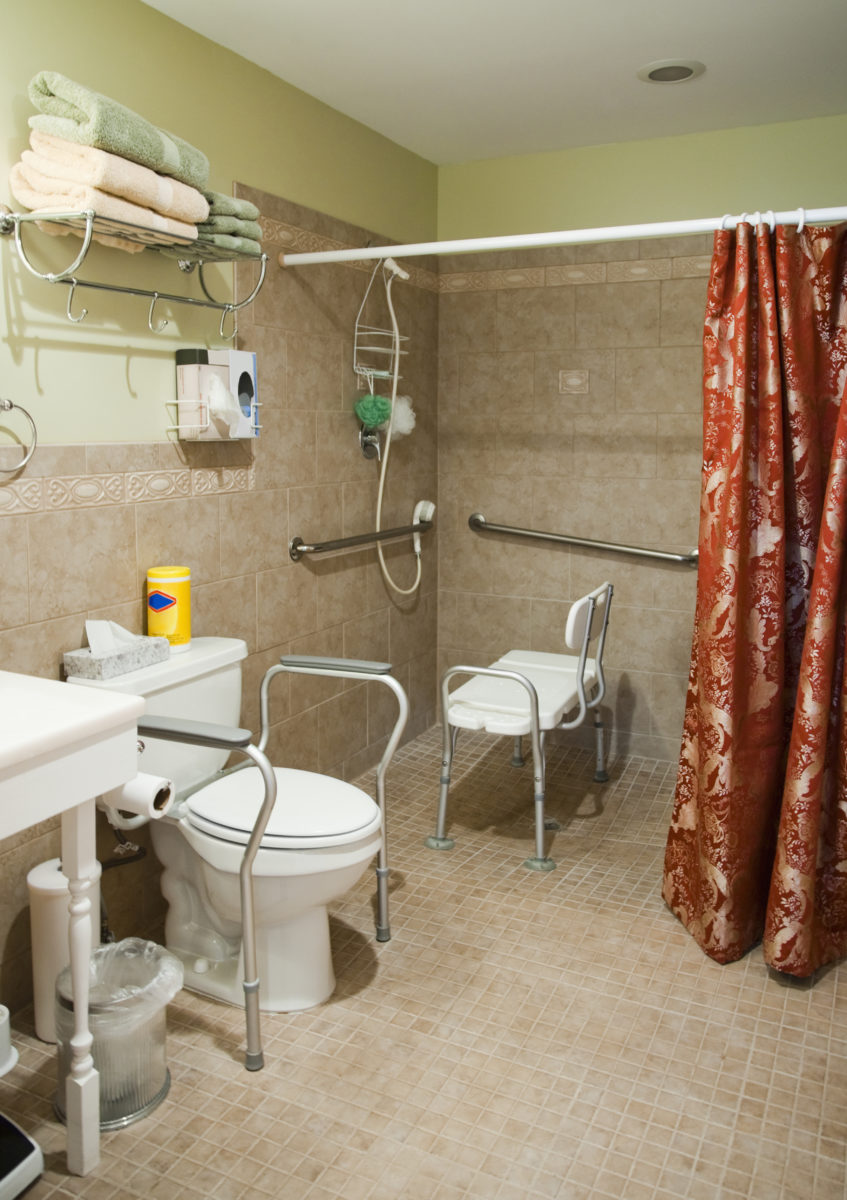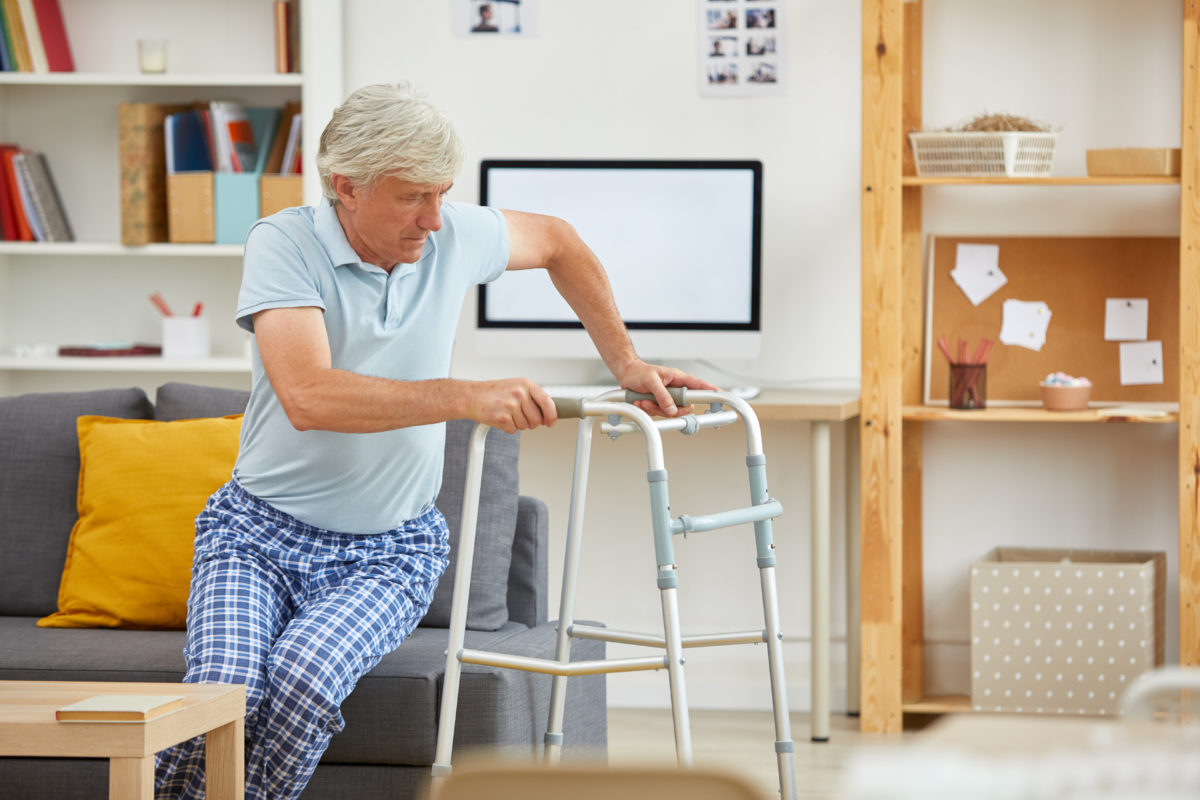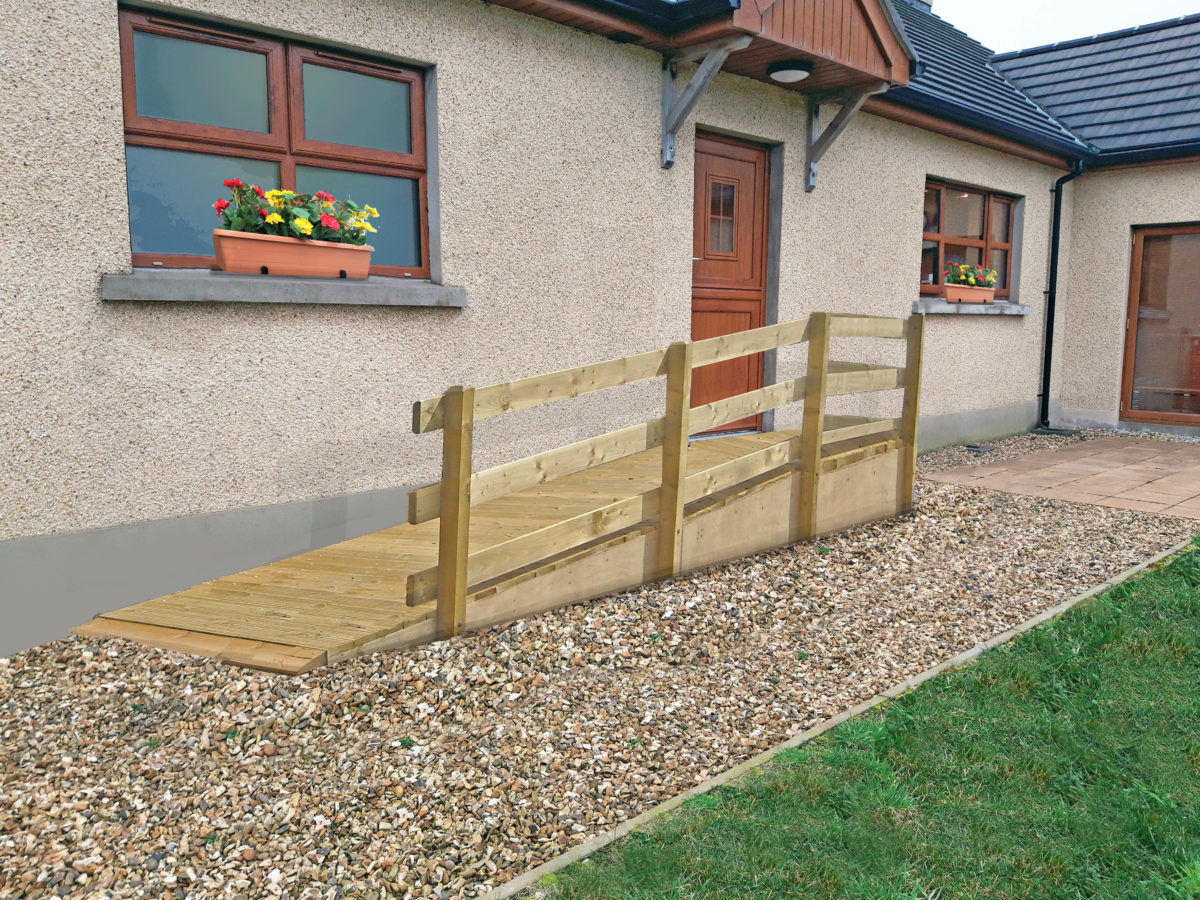Changes in mobility can come from a variety of sources, such as old age or chronic illness and having your mobility change is a difficult adjustment. But with good planning you can maintain your quality of life and still feel independent in your own home. There are simple changes you can make in each room in your house to make them more accessible and will allow you to feel in charge of your life.
Making Bathrooms Safer:
Accidents in the bathroom are as dangerous as they are common, but there is an abundance of ways to reduce risk in your bathroom. Placing anti-slip mats in areas that get wet frequently, such as in and around the shower, is a simple change that can make a huge difference. Another simple risk mitigation tactic that can be implemented throughout your whole house is upgrading your lighting. Good lighting, particularly for the visually impaired, can make a huge difference in spotting potential hazards, and finding things they need.

Installing a shower chair can reduce the risk of falling in a few ways, sitting reduces the amount of effort needed to shower properly, and it can keep you from slipping and falling in the shower. Grab bars and railings in key places, such as in the bathtub or around the toilet, can also improve your quality of life and aid you getting around your bathroom. One final change you can make in your bathroom that can make it more accessible is changing out your taps for something that is easier to use. Faucets that require twisting or turning can be pain-inducing, and sometimes even impossible to turn on and off. In fact, this contributes to more swelling in my hands, which can take days to recover from. A single tap that controls both hot and cold water temperature plus the amount of water with a slight lifting action is best to make your shower easier to use and more accessable.
Bedroom Accessibility:

We spend at least a third of our lives in bed, and bedding that fits your personal ergonomic needs is as important as any other mobility equipment to maintain your health and happiness. Your mattress and pillow directly affects your quality of sleep and physical health. If they are not comfortable or supportive enough, you might actually be perpetuating your pain. Rest and sleep are vital for healing, and a good mattress and pillows can play a huge role in that. Continuing in that same vein, it’s important to pay attention to what your bedding is made out of, particularly if you have sensitive skin. Synthetic materials can cause skin irritation, and that will take away from your overall quality of life.
Kitchens and the Goldilocks Zone:
While living with mobility issues, finding the Goldilocks Zone for what you can reach is critical. Don’t put important things too high or too low. Be mindful of where you put frequently used kitchen appliances so you don’t have to bend down or reach up too often. This also applies to the type of fridge you have. Getting a side-by-side fridge can be helpful for people with mobility issues, as it reduces the amount of bending and reaching to get your favorite snacks. Labeling things in your kitchen can be a game changer, whether you suffer from brain fog, or if you have a new caretaker, you’ll be able to have access to the things you need.
Making your Living Room More Accessible:
The living room is another major space in our houses. Many of us spend lots of time on the sofa reading or watching TV, or entertaining guests. Living room spaces tend to be large with no support in any direction, so it is important to improve it where we can. For one, the flooring should be anti-slip. Support rails or mobility aids could also be placed where a person most likely needs them. Also, be mindful of the layout of the room, and make sure there are clear paths that can be easily navigated through with a walker or wheelchair.

Similarly to a good mattress, a good sofa that allows one to lie back or stretch out can make a difference. Good cushions and throws are easy ways to help make a person more comfortable as well. The coffee table should be at a comfortable height, and items placed on it should be within arm’s reach from the sofa.
If you’re remodeling your home, here are some ideas on how to make your home more accessible:
Swap out your door knobs for levers. This makes doors easier to open, particularly for people with chronic joint pain.
Consider widening your door frames. The ADA requires that all door frames in public spaces are at least 32 inches wide to allow for wheelchair users to get through. While your home doesn’t have to be ADA compliant, their regulations can be a good rule of thumb to make your home easier to navigate with mobility issues. You may also want to install a ramp at the entrance to your home. Most homes have at least a few steps up into them, and even a few stairs can be difficult to use with a wheelchair or walker. Having a ramp with a gentle incline will make your home more accessible to wheelchair users.

A major thing you can do to make your home more accessible is to install a stairlift. If you have multiple stories in your home, installing a stairlift can dramatically increase accessibility to every floor in your home. This helps a disabled or chronically ill person to be more independent, and move around their own homes with more confidence. It can also create more connections, as they are able to join a family member in another room with greater ease. We have written a few articles about choosing the best stairlift for your situation, for straight stairlifts, curved stairlifts, and even residential elevators.
If you have mobility issues, that doesn’t have to get in the way of you living your life to the fullest, or keep you from being autonomous. HomeLift can help you take charge of your life again, and make your home more accessible for your whole family.
Note: This is just a rough guide, and nothing in this article should be taken as medical advice. Always be sure to check with your doctor before you start on any new treatment or protocol.

